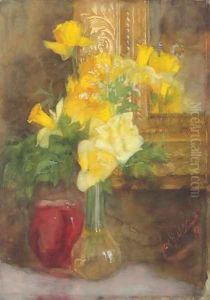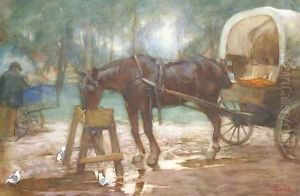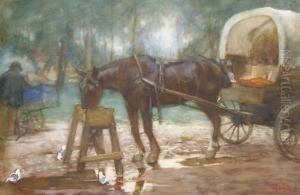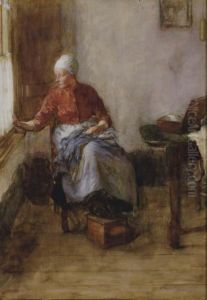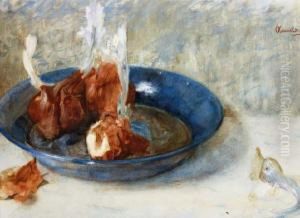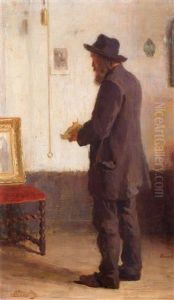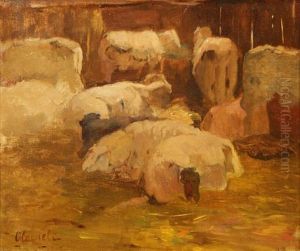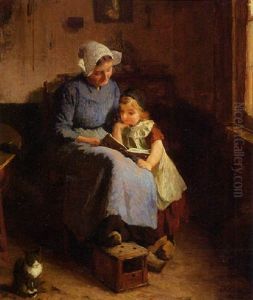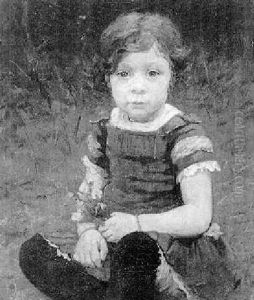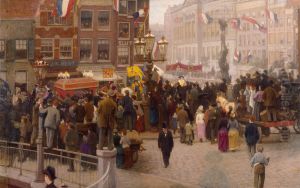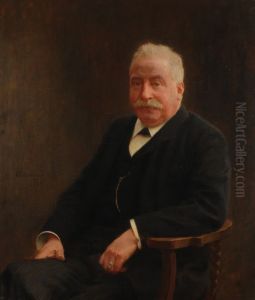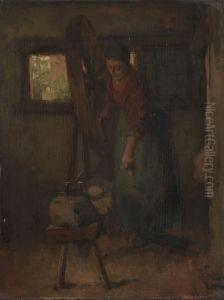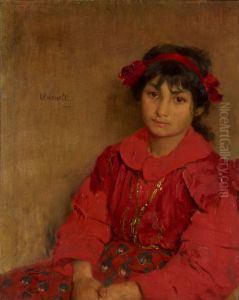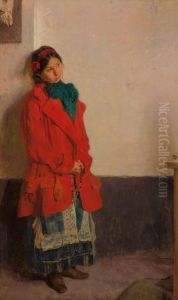Ferdinand Oldewelt Paintings
Ferdinand Oldewelt was a Dutch artist born in 1872, whose work primarily spans the late 19th and early 20th centuries. He is not widely known in the mainstream art history narratives, often overshadowed by his contemporaries in a period rich with artistic innovation and the emergence of modern art movements. However, Oldewelt carved out a niche for himself with his distinct style and contributions to the Dutch art scene.
His early life and education played a significant role in shaping his artistic career. Born in the Netherlands, Oldewelt was part of a Europe that was undergoing rapid social, technological, and artistic changes. The exact details of his education remain somewhat obscure, but it is known that he received traditional art training, which was typical of the period. This training provided him with a strong foundation in the techniques and principles of drawing and painting, which he would later build upon in his work.
Oldewelt's artistic output is characterized by his dedication to realism, with a particular focus on landscapes, still lifes, and portraits. Unlike many of his contemporaries who were drawn to the avant-garde movements of the time, Oldewelt remained committed to a more classical approach to art. His landscapes, often depicting the Dutch countryside, are noted for their meticulous detail, vibrant color palette, and the ability to capture the changing qualities of light. These works not only reflect Oldewelt's technical skill but also his deep appreciation for the natural beauty of his homeland.
Throughout his career, Oldewelt exhibited his work in various venues, gaining respect among his peers and a modest following. Despite the lack of widespread fame, his contributions to the Dutch art world were significant, particularly in the realm of teaching. Oldewelt was passionate about education and spent a considerable part of his career as an instructor, imparting his knowledge and skills to the next generation of artists. This aspect of his work helped to sustain his influence in the Dutch art scene, even if his name did not achieve the same level of recognition as some of his contemporaries.
Ferdinand Oldewelt passed away in 1935, leaving behind a body of work that, while not widely celebrated internationally, holds a place of respect within the context of Dutch art history. His commitment to realism and classical techniques, combined with his contributions to art education, make him a noteworthy figure, deserving of recognition for his dedication to the craft of painting and his impact on the artists who followed him.
